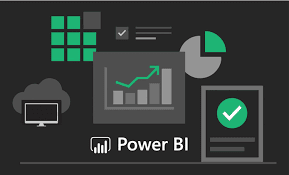In the business world, everyone wants an insightful reporting platform at their fingertips. When the process of gathering and presenting data is done well, it becomes easier to identify the areas in which the business is thriving or struggling and whether you are on track to achieve your goals. With the increase of new technological trends, report automation tools are now the backbone of the reporting process and have made data analysis much easier. Most businesses now utilize Power BI automation to generate prudent dashboards and reports to help make decisions. In this article, we look at what automated data reporting is and how it can help increase your business performance.
What Is Automated Data Reporting?
Automated data reporting creates reports for business users and automatically updates and delivers them on a predefined schedule and through the desired platform. This allows for automatic data extraction, visualization updates, and automatic report sharing without requiring manual work. Report automation helps save time and costs and reduces errors from manual data aggregation. An optimal solution for automated data reporting is BI software which facilitates many aspects of report automation, including data collection, processing, analysis, and reporting.
Why Automate the Reporting Process?
Report automation is an effective way to get an overview of your marketing efforts. It is essential that all the necessary stakeholders have easy access to reports with the specific data they require. Data is collected and fed into the system, analyzed, and delivered to teams online or via email.
Without automation, reviewing and running reports is time-consuming and affects your ability to take action. Report automation helps make the process more efficient and allows you to generate reports more frequently, freeing up business resources for more value-adding tasks.
How to Automate the Reporting Process
There are many report automation tools available. Selecting the right tool comes down to your specific business goals, the metrics that affect them, and the reporting you require. Here are some of the most common methods for report automation:
Code-it-yourself system
You can code and develop a system to automate your reporting process. Such tools are advantageous in that they offer incredible flexibility and customization. Such a system is perfectly adaptable to your business because you develop it using your business data and functionalities. However, these systems take longer to create and are more costly to maintain and update since they require hiring developers to create the platform.
Business Intelligence (BI) tools
Another option is using Business Intelligence (BI) tools. You do not need to build these yourself; they offer many customization options. BI tools come bundled with ready templates, including data visualization and analysis dashboards. The tools generally require you to learn how to use them first so you can understand how they work and handle your data.
Data analytics dashboard tools
Data analytics dashboard tools are less complex than BI tools and are more suited for small businesses. These tools offer a quick and easy way to build and create reports and share them with other employees. Data analytics dashboard tools are also budget-friendly and are a great option if you want the benefits of automating your reports.
Automated reporting tools
Automated reporting tools are software created to make automated reports. These tools are usually straightforward and have easy-to-use interfaces with customizable report templates.
What Is an Automated Reporting System?
An automated reporting system is a management tool that creates and shares business reports with information that is updated at specific intervals. The system eliminates the need for traditional data-sharing methods since it incorporates modern smart features such as predictive analysis, interactivity, and drag-and-drop interfaces. Automated reports generate beautiful dashboards that display your data simply and clearly.
Benefits of an Automated Reporting System
Report automation positively impacts not just select teams or individuals but your entire organization. Here are some benefits of incorporating an automated reporting system:
- Saves your data team time: Sending the same report to multiple individuals in a business is time-consuming and requires intensive manual labor. Automatic reporting reduces the time and effort needed for these redundant tasks.
- Increases productivity: Teams will spend less time on manual and repetitive data-sharing tasks. The time saved can be spent performing the actual analysis.
- Saves costs: Saving time also means you are saving money. Data teams will no longer have to spend large parts of the day on tasks that can be automated.
- Allows for real-time decision-making: Automatic reporting guarantees that data shared across the business is kept up-to-date and is automatically refreshed to ensure management teams and stakeholders have accurate data on the fly.
- Makes access to data easier: Having automatic reports sent out at regular intervals gives your teams consistent access to key business metrics and helps to decentralize data.
What Are the Three Steps in the Automating Process?
When you are ready to incorporate automation into your business practices or create an automation strategy, it is important to understand these three steps in the automating process:
Extract data
In this stage, you should map the relationship between your processes, data, technology, and people. Modeling your business helps you identify how business data is handled and ensures you know where automation is required.
Transform data into the correct format
Here is where the planning and insight done in the first step comes together to ensure you use the right technologies for the right tasks. You’ll want to find the right automation tool for your type of data. An automation tool should support seamless data sharing within the business without redundancies.
Load
After launching the automated process, evaluating how it works is essential. Analyze the new data and reports being generated to identify whether any processes can be improved.
Final Thoughts
When considering reporting automation, it is essential to understand how the principle works so that your business can benefit from intelligent reporting. Automation will boost productivity and allow you to focus solely on driving the business forward. An automated report system will keep your business thriving and ensure you have an edge over the competition.
Are you ready to enhance your business processes with automation tools? Try ChristianSteven Power BI Report Scheduler to maximize your analytical capabilities today. We look forward to working with you.
My name is Sardar Ayaz a professional content writer and SEO expert having Proven record of excellent writing demonstrated in a professional portfolio Impeccable grasp of the English language, including idioms and current trends in slang and expressions. I have ability to work independently with little or no daily supervision with strong interpersonal skills and willingness to communicate with clients, colleagues, and management.
I can produce well-researched content for publication online and in print, organize writing schedules to complete drafts of content or finished projects within deadlines. I have 12 years’ experience to develop related content for multiple platforms, such as websites, email marketing, product descriptions, videos, and blogs.
I use search engine optimization (SEO) strategies in writing to maximize the online visibility of a website in search results











